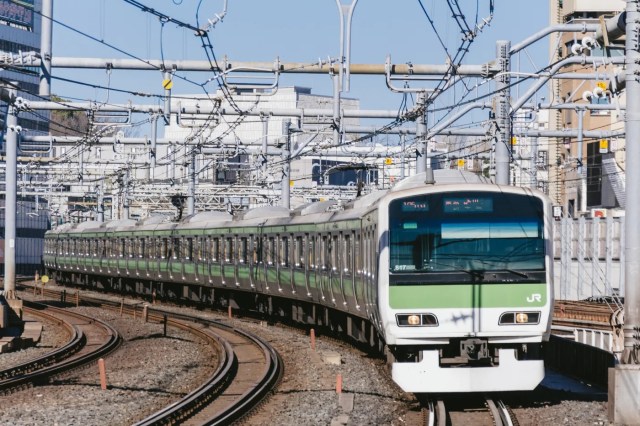
Ridiculous problem could have been avoided simply by looking at a calendar.
Along with a handful of other prefectures in Japan, Tokyo’s government recently declared a state of emergency, prompted by a resurgent spike in coronavirus infections. The declaration involved asking citizens and businesses to comply with a number of protocols meant to combat the spread of the disease by preventing people from spending extended periods of time gathered in public places, such as shops and restaurants.
This also included anti-crowding measures for public transportation providers to follow, and on Thursday morning the result of those anti-crowding policies looked like this.
コロナ対策で「減便」した山手線池袋駅で目の前に広がっている光景がこれ。 pic.twitter.com/Tf92Nkeol1
— T A I C H I (@Trb_Terios) May 5, 2021
Clearly, something went wrong with the government’s plan, as the dense mass of humanity on the platform of downtown Tokyo’s Ikebukuro Station shows. So what happened?
Starting on Monday, the Tokyo metropolitan government and the Ministry of Land, Infrastructure, Transport and Tourism requested that rail operators reduce their number of trains during the morning and evening rush hours for one week. The logic was that Japan was in its Golden Week spring vacation period, and since fewer people were going to work, there was a reduced need for trains, especially with the government requesting that Tokyoites limit their non-essential outings. However, there’s a big problem with this, which is that the name “Golden Week” is sort of inaccurate.
▼ Another crowded platform and train on Thursday morning.
https://twitter.com/YSuI7elsGWNtWtN/status/1390077616950972418Golden Week actually consists of only four holidays: Showa Day (April 29), Constitution Memorial Day (May 3), Greenery Day (May 4), and Children’s Day (May 5). You’ll notice that only three of those are consecutive, and this year Showa Day fell on a Thursday, while the other three took up Monday-Wednesday of the following week. So while a few particularly generous workplaces may have shut down for the entire week of May 3-7, and some workers may have opted to use their personal vacation days in order to have a solid week off from work, for most people it was back to work on Thursday.
But on the morning of May 6, passengers for the Yamanote Line, the busiest commuter line in Japan, as well as six other critical worker pathways into downtown Tokyo were dealing with a roughly 20-percent reduction in the number of trains being operated by East Japan Railway Company, which was complying with the government requests for reduced capacity during the week. However, the number of passengers was still at 95 percent or above of what it is on a typical weekday, resulting in extremely crowded conditions, with trains in extreme cases running at more than 180 percent of capacity (100-percent capacity being defined as every passenger having either a seat to sit in or a strap of their own to hold on to if standing).
馬鹿だね。GW明けで間引き運転すれば混雑するの当たり前じゃん。蜜を避けると言うなら逆に増便で一台当たりの乗客減らすべきじゃないの?
— 自立と共生 ✌('ω')✌ (@qmei99) May 5, 2021
何から何までチグハグ。 pic.twitter.com/5KBivUVk3D
In response, JR East has announced that it will be returning to its regularly scheduled number of trains on Friday.
Sources: NHK, Yahoo! Japan News/Kyodo, Jin
Top image: Pakutaso
● Want to hear about SoraNews24’s latest articles as soon as they’re published? Follow us on Facebook and Twitter!

 These are the 11 most crowded trains in Japan…and surprise! They’re all in the Tokyo area
These are the 11 most crowded trains in Japan…and surprise! They’re all in the Tokyo area Tokyo Metro adds platform display showing where least crowded parts of the next train will be
Tokyo Metro adds platform display showing where least crowded parts of the next train will be Government plan has everyone talking about a 17-day-long New Year holiday
Government plan has everyone talking about a 17-day-long New Year holiday Please refrain from wearing Halloween costumes that may scare people, Tokyo trains wisely ask
Please refrain from wearing Halloween costumes that may scare people, Tokyo trains wisely ask New coronavirus cases in Tokyo drop to lowest level in almost two weeks
New coronavirus cases in Tokyo drop to lowest level in almost two weeks Foreigner’s request for help in Tokyo makes us sad for the state of society
Foreigner’s request for help in Tokyo makes us sad for the state of society Japanese city loses residents’ personal data, which was on paper being transported on a windy day
Japanese city loses residents’ personal data, which was on paper being transported on a windy day Smash Bros. director Sakurai stabs Kirby in the face, has delicious justification for it
Smash Bros. director Sakurai stabs Kirby in the face, has delicious justification for it Seaside scenery, history, and so many desserts on Yokohama’s Akai Kutsu【Japan Loop Buses】
Seaside scenery, history, and so many desserts on Yokohama’s Akai Kutsu【Japan Loop Buses】 Should you add tartar sauce to Japanese curry rice? CoCo Ichi makes diners an unusual offer
Should you add tartar sauce to Japanese curry rice? CoCo Ichi makes diners an unusual offer Red light district sushi restaurant in Tokyo shows us just how wrong we were about it
Red light district sushi restaurant in Tokyo shows us just how wrong we were about it Princesses, fruits, and blacksmiths: Study reveals the 30 most unusual family names in Japan
Princesses, fruits, and blacksmiths: Study reveals the 30 most unusual family names in Japan Ghibli Park now selling “Grilled Frogs” from food cart in Valley of Witches
Ghibli Park now selling “Grilled Frogs” from food cart in Valley of Witches Hamburg and Hamburg Shibuya: A Japanese restaurant you need to put on your Tokyo itinerary
Hamburg and Hamburg Shibuya: A Japanese restaurant you need to put on your Tokyo itinerary Harajuku Station’s beautiful old wooden building is set to return, with a new complex around it
Harajuku Station’s beautiful old wooden building is set to return, with a new complex around it McDonald’s new Happy Meals offer up cute and practical Sanrio lifestyle goods
McDonald’s new Happy Meals offer up cute and practical Sanrio lifestyle goods Japanese ramen restaurants under pressure from new yen banknotes
Japanese ramen restaurants under pressure from new yen banknotes French Fries Bread in Tokyo’s Shibuya becomes a hit on social media
French Fries Bread in Tokyo’s Shibuya becomes a hit on social media Studio Ghibli releases new action figures featuring Nausicaä of the Valley of the Wind characters
Studio Ghibli releases new action figures featuring Nausicaä of the Valley of the Wind characters New private rooms on Tokaido Shinkansen change the way we travel from Tokyo to Kyoto
New private rooms on Tokaido Shinkansen change the way we travel from Tokyo to Kyoto Tokyo Tsukiji fish market site to be redeveloped with 50,000-seat stadium, hotel, shopping center
Tokyo Tsukiji fish market site to be redeveloped with 50,000-seat stadium, hotel, shopping center Beautiful Ghibli sealing wax kits let you create accessories and elegant letter decorations【Pics】
Beautiful Ghibli sealing wax kits let you create accessories and elegant letter decorations【Pics】 Studio Ghibli releases Kiki’s Delivery Service chocolate cake pouches in Japan
Studio Ghibli releases Kiki’s Delivery Service chocolate cake pouches in Japan New definition of “Japanese whiskey” goes into effect to prevent fakes from fooling overseas buyers
New definition of “Japanese whiskey” goes into effect to prevent fakes from fooling overseas buyers Our Japanese reporter visits Costco in the U.S., finds super American and very Japanese things
Our Japanese reporter visits Costco in the U.S., finds super American and very Japanese things All-you-can-drink Starbucks and amazing views part of Tokyo’s new 170 meter-high sky lounge
All-you-can-drink Starbucks and amazing views part of Tokyo’s new 170 meter-high sky lounge More foreign tourists than ever before in history visited Japan last month
More foreign tourists than ever before in history visited Japan last month New Pokémon cakes let you eat your way through Pikachu and all the Eevee evolutions
New Pokémon cakes let you eat your way through Pikachu and all the Eevee evolutions Disney princesses get official manga makeovers for Manga Princess Cafe opening in Tokyo
Disney princesses get official manga makeovers for Manga Princess Cafe opening in Tokyo Sales of Japan’s most convenient train ticket/shopping payment cards suspended indefinitely
Sales of Japan’s most convenient train ticket/shopping payment cards suspended indefinitely Sold-out Studio Ghibli desktop humidifiers are back so Totoro can help you through the dry season
Sold-out Studio Ghibli desktop humidifiers are back so Totoro can help you through the dry season Japanese government to make first change to romanization spelling rules since the 1950s
Japanese government to make first change to romanization spelling rules since the 1950s Ghibli founders Toshio Suzuki and Hayao Miyazaki contribute to Japanese whisky Totoro label design
Ghibli founders Toshio Suzuki and Hayao Miyazaki contribute to Japanese whisky Totoro label design Doraemon found buried at sea as scene from 1993 anime becomes real life【Photos】
Doraemon found buried at sea as scene from 1993 anime becomes real life【Photos】 Tokyo’s most famous Starbucks is closed
Tokyo’s most famous Starbucks is closed One Piece characters’ nationalities revealed, but fans have mixed opinions
One Piece characters’ nationalities revealed, but fans have mixed opinions We asked a Uniqlo employee what four things we should buy and their suggestions didn’t disappoint
We asked a Uniqlo employee what four things we should buy and their suggestions didn’t disappoint Here’s what happens when the trains shut down in Tokyo during rush hour: Craziness 【Photos】
Here’s what happens when the trains shut down in Tokyo during rush hour: Craziness 【Photos】 One of Tokyo’s busiest subway lines is adding women-only cars
One of Tokyo’s busiest subway lines is adding women-only cars Tokyo trains set to become less convenient with new last train schedule
Tokyo trains set to become less convenient with new last train schedule Japan officially declared coronavirus-infected nation by Micronesia, travel restrictions enacted
Japan officially declared coronavirus-infected nation by Micronesia, travel restrictions enacted Tokyo partially shut down busiest train line, 3,200 workers fought clock on platform project【Vid】
Tokyo partially shut down busiest train line, 3,200 workers fought clock on platform project【Vid】 Japanese politicians want workers across country to have option for three-day weekends every week
Japanese politicians want workers across country to have option for three-day weekends every week Japan bad train manners survey reminds us of three things to watch out for while riding the rails
Japan bad train manners survey reminds us of three things to watch out for while riding the rails Japan’s oldest monorail is permanently closing next month
Japan’s oldest monorail is permanently closing next month Japanese police requests train stations in Shibuya to shut exits during New Year countdown
Japanese police requests train stations in Shibuya to shut exits during New Year countdown Tokyo Disneyland and Disney Sea will close for two weeks because of coronavirus fear
Tokyo Disneyland and Disney Sea will close for two weeks because of coronavirus fear Tokyo subway bribes people with free noodles to get them to take earlier, non-rush hour trains
Tokyo subway bribes people with free noodles to get them to take earlier, non-rush hour trains Driverless train reverses by accident in Japan, injuring over a dozen passengers
Driverless train reverses by accident in Japan, injuring over a dozen passengers Japanese transport group aims to set up public ropeway transit system by 2025
Japanese transport group aims to set up public ropeway transit system by 2025 Flying beef bowls?!? Yoshinoya completes drone delivery of its signature gyudon【Video】
Flying beef bowls?!? Yoshinoya completes drone delivery of its signature gyudon【Video】
Leave a Reply